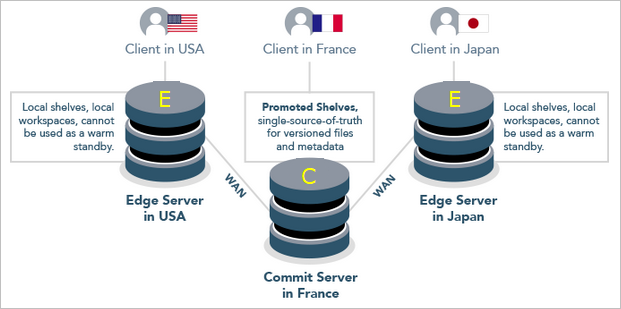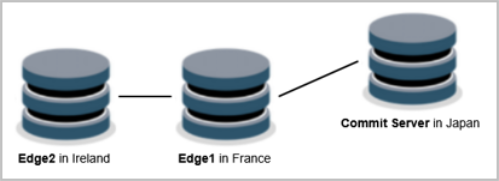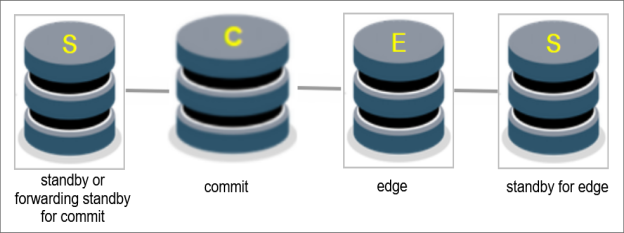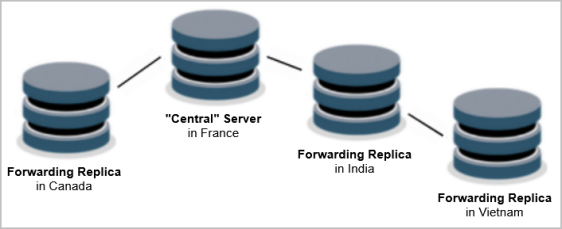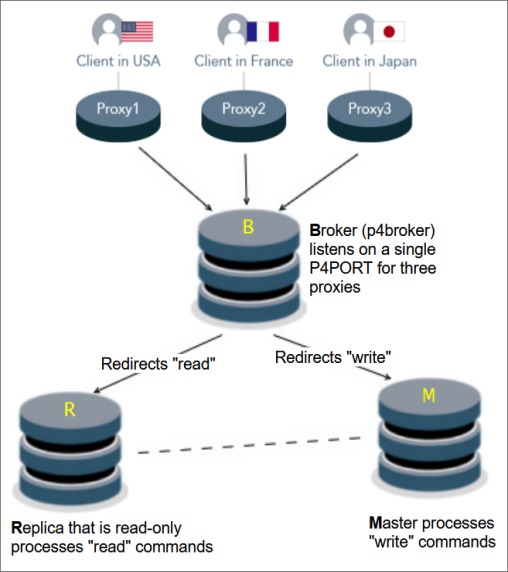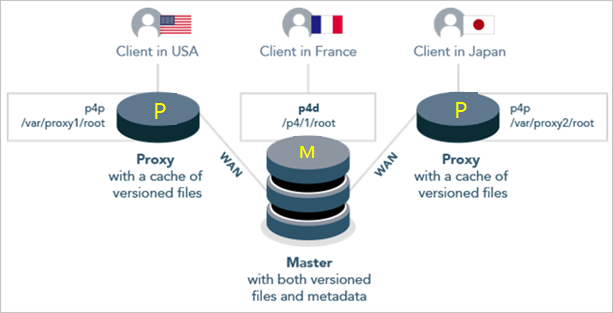Deployment architecture
Small organizations often find a single server is adequate to meet user needs. However, as the business grows and usage expands in scale and geography, many organizations deploy a multi-server architecture.
To get a list of all the servers that are connected to this server, see p4 topology in the P4 CLI Reference.
Multi-server architectures
| Architecture | Advantage | Disadvantage |
|---|---|---|
|
|
Best performance overall because most commands are local. An edge server that is used only for automated processing, such as builds, can be deployed without a backup/recovery solution because the edge local data is critical only during build-time. The commit server has promoted shelves, the single source of truth for versioned files and metadata. |
|
|
|
Enhanced security because the commit server is “air gapped” from the Distribution Server. |
|
|
|
Two or more edge servers can be chained together. If your organization is geographically dispersed, the configuration might allow all users to have an edge server nearby. Supports filtering. A Forwarding replica, with its |
|
|
|
A standby or forwarding standby server provides a warm standby for the server it replicates. Standby servers support Failover from a commit-server (or standard) server in case it becomes unavailable. See Standby and forwarding-standby. You can also deploy a standby server to support failover from an edge server. See Standby for an edge.
|
|
|
|
Customizable filtering. Supports "daisy chaining" to additional sites, such as forwarding to a target server The immediately upstream server for replica servers, edge servers, standby servers, proxies and brokers. See also 'upstream server' and 'central server'. that forwards to the central server The one server that is innermost in a multi-server deployment. In the server specification form field for Services, the central server might be specified as “standard” or “commit-server”. If edge servers are part of the multi-server deployment, the central server must be a commit server. See also 'upstream server'.. Can reduce the metadata replication load on the central server and the amount of data traveling across the WAN. To learn more, see the Perforce Knowledge Base article on server-to-server arrangements, Helix replication rules. |
Starting with 2018.2, we recommend a standby server with rpl.journalcopy.location=1 for high availability and disaster recovery. |
|
|
Supports allowing a command to pass, rejecting a command if the options are incorrect, redirecting a command to another server, filtering commands, and responding to a command. (See Command handler specifications) When the p4d process is offline for maintenance, the broker can display a user-friendly message. |
|
|
|
Easy to install, configure, and maintain. Improves performance by caching frequently transmitted file revisions. Reduces demand on P4 Server and the network over which it runs. No need to back up the proxy cache. Especially beneficial with larger files. |
|
Services assignment
To assign a service to a server, the administrator uses the Services field that appears with the p4 server command. To learn more, see How server types handle requests.
